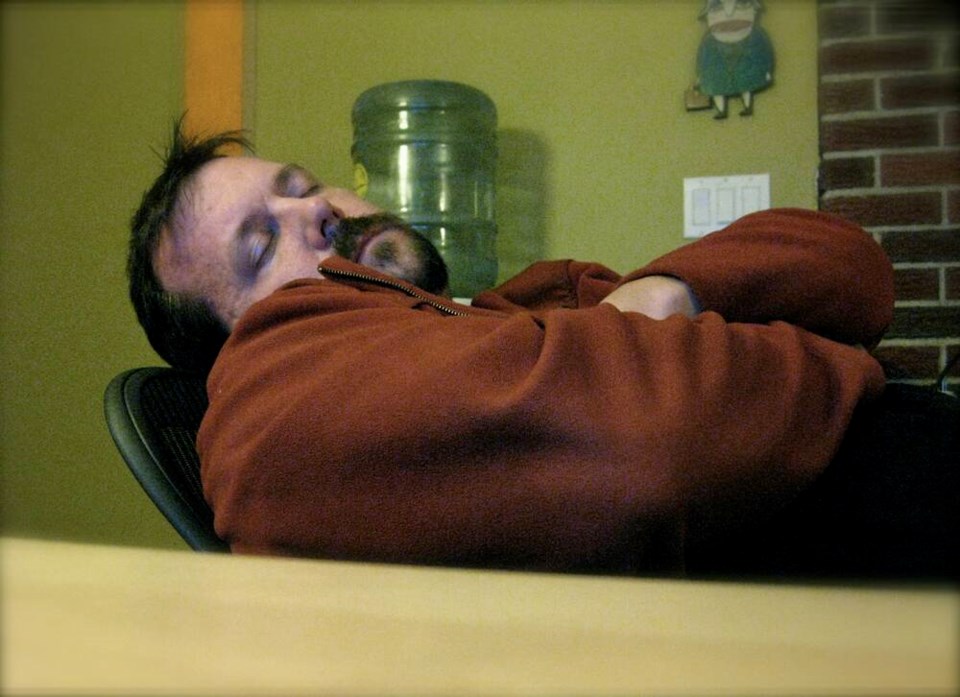Life on our planet is influenced by powerful natural forces, like gravity, atmospheric pressure, income tax, Netflix, and even the rotation of the Earth.
The Earth’s rotation, as you may or may not know depending on your junior high school attendance record, is particularly important, as it produces a regular cycle in which light and temperature increase during the day, and decrease during the night.
Furthermore, all living things — plants, animals, junior high school students — respond to this day/night cycle with physical, mental and behavioural changes during the 24-hour period.
You may have noticed this in your own life. For example, you may greet the morning workday with enthusiasm and bonhomie, but gnash your teeth and plot the total annihilation of your idiot colleagues by early afternoon.
Biologists call this the “circadian rhythm,” the body’s internal timekeeper in charge of helping us wake up, fall asleep and feel more or less sleepy and/or kill-y as it ebbs and flows throughout the day.
For example, the human body experiences a natural dip in energy from about two to four every afternoon. Whether you call this the “post-lunch dip,” “afternoon slump” or “food coma,” it’s not you wanting to sleep under the desk, it’s your circadian rhythm.
Your circadian rhythm is responsible for how difficult it is to stay alert and concentrate in the afternoon, and to not scream and throw things at Tammy when she once again talks about her gross ingrown toenail during meetings.
The take-home point here is to understand your circadian rhythm, which comes down to accepting the happy truth that we are built to nap. Please keep in mind this is science talking, not just me staring at my keyboard, wishing I was fast asleep at home.
Research shows that taking a nap reduces the level of adenosine in the brain, a neurotransmitter that promotes sleep. Less of that stuff sloshing around is a good thing when you want to feel alert.
I think we can all agree the world needs to feel more lerts. Hahaha! BONUS junior high school student joke!
Naps also improve memory by helping our brains with memory consolidation, the important process where information is turned into long-term memory critical for survival. For example, remembering how to drive a stick-shift car, the theme song to Gilligan’s Island and the correct date of your wedding anniversary.
If you have forgotten any of those things, you should probably hit the pillow right now.
A good mid-afternoon rest also brings obvious benefits, like reduced fatigue, improved mood and those hilarious crinkled lines that bedsheets imprint across your face.
Finally, napping boosts your immunity by reducing inflammatory cytokines and norepinephrine. Again, this is all documented science that I would reference if I were not currently climbing under my desk for a brief kip.
According to Statistics Canada, on an average day, only 13% of Canadians 15 and older take naps.
Part of the reason is because our work-obsessed culture views sleep as wasteful, unproductive time.
Falling asleep on the job is considered serious misconduct, and grounds for disciplinary action, right up there with chronic elevator flatulence and talking about your gross ingrown toenail all the time.
Some cultures fully embrace the idea of a power nap. In Japan, it is an art form.
Inemuri — I swear I am not making this up — is the Japanese practice of selective sleeping during work hours: on the way to the office, at your desk, during meetings, whenever!
Inemuri roughly translates to “I am present while sleeping,” meaning: yes, I’m asleep, but I will be awake the moment you need me.
Likewise, there is the great Latino tradition of the “siesta,” or afternoon nap, when it is too hot to work and your circadian rhythm naturally moves from cha cha cha to more of a bossa nova.
Of course, napping isn’t for everyone. Some people just can’t sleep during the day, or have difficulty sleeping in places other than their own beds, such as the office supply cabinet or the cardboard recycling dumpster in the parkade.
Some people are worried that napping will exacerbate their nighttime sleep problems, which I can relate to because I am older than 50.
That’s about when everything starts breaking down and crapping out, including your circadian rhythm. Fortunately, there is a solution: don’t turn 50. I’m kidding! I mean drugs.
One final potential drawback to the afternoon nap is that it can make you feel groggy and disoriented after waking up, which doctors call “sleep inertia,” but I like to call “Wednesdays.”
Most of these downsides can be overcome, as there is a right way and a wrong way to nap. So, for the most beneficial naps, I suggest you follow the … uh, following advice from sleep experts:
Keep naps short. Set an alarm to wake you after only 10 to 20 minutes. The longer you nap, the more likely you are to feel groggy afterward.
Nap in the early afternoon. Lean into your food coma with a nap sometime between 1 and 3 p.m. when you are naturally low-energy. Napping after 3 p.m. interferes with nighttime sleep.
Create a restful environment. Nap in a quiet, darkened place without any distractions such as junior high school students, or Tammy and her feet.
I’m sure I’ll like them all much better after I recharge my circadian rhythm with a little shuteye …
>>> To comment on this article, write a letter to the editor: [email protected]



